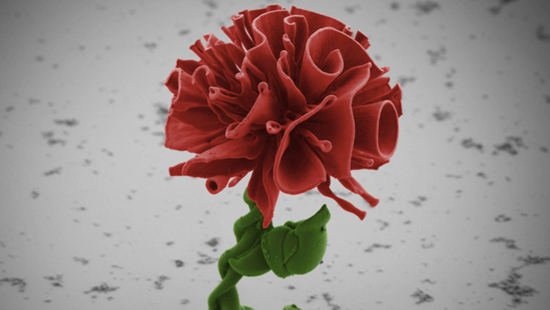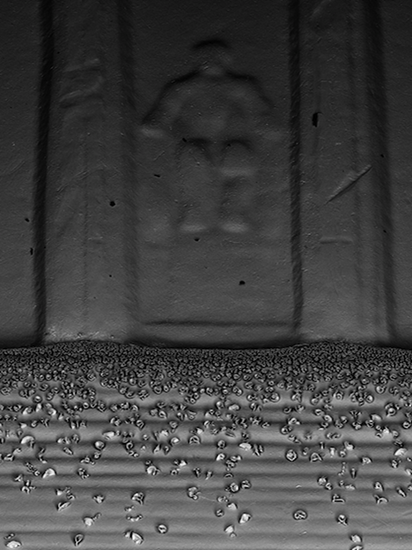
Harvard engineers created the microscopic flower above using a technique called “hierarchical microarchitectures”. The tiny but intricate plant shapes, such as vases, flowers, and leaves, begin with a glass plate dipped into a mixture of silicon and minerals (most importantly, barium chloride salts). As the solution solidifies, engineers make minor adjustments to the environment in order to coax the salts into the desired shape. Lowering the temperature of the solution makes the petals thicker and bursts of carbon dioxide injected into the mixture cause the salts to ripple. Colors are added by mixing dyes into the solution. According to Science magazine, the result is “a bouquet of hierarchically assembled multi-scale microstructures with unprecedented levels of complexity and precision”.
It’s not easy to get the mix just right either. The process is extremely sensitive to changes in the environment. One Harvard scientist noted:
“Every flower has a unique shape. It is very sensitive. If I just walk by the beaker in the lab, it changes the growth of these structures.”
To get an idea of the small size of these works of art, check out the rosebud full of flowers that engineers imprinted onto the back of a penny.
Here are a few more of the remarkable structures.













